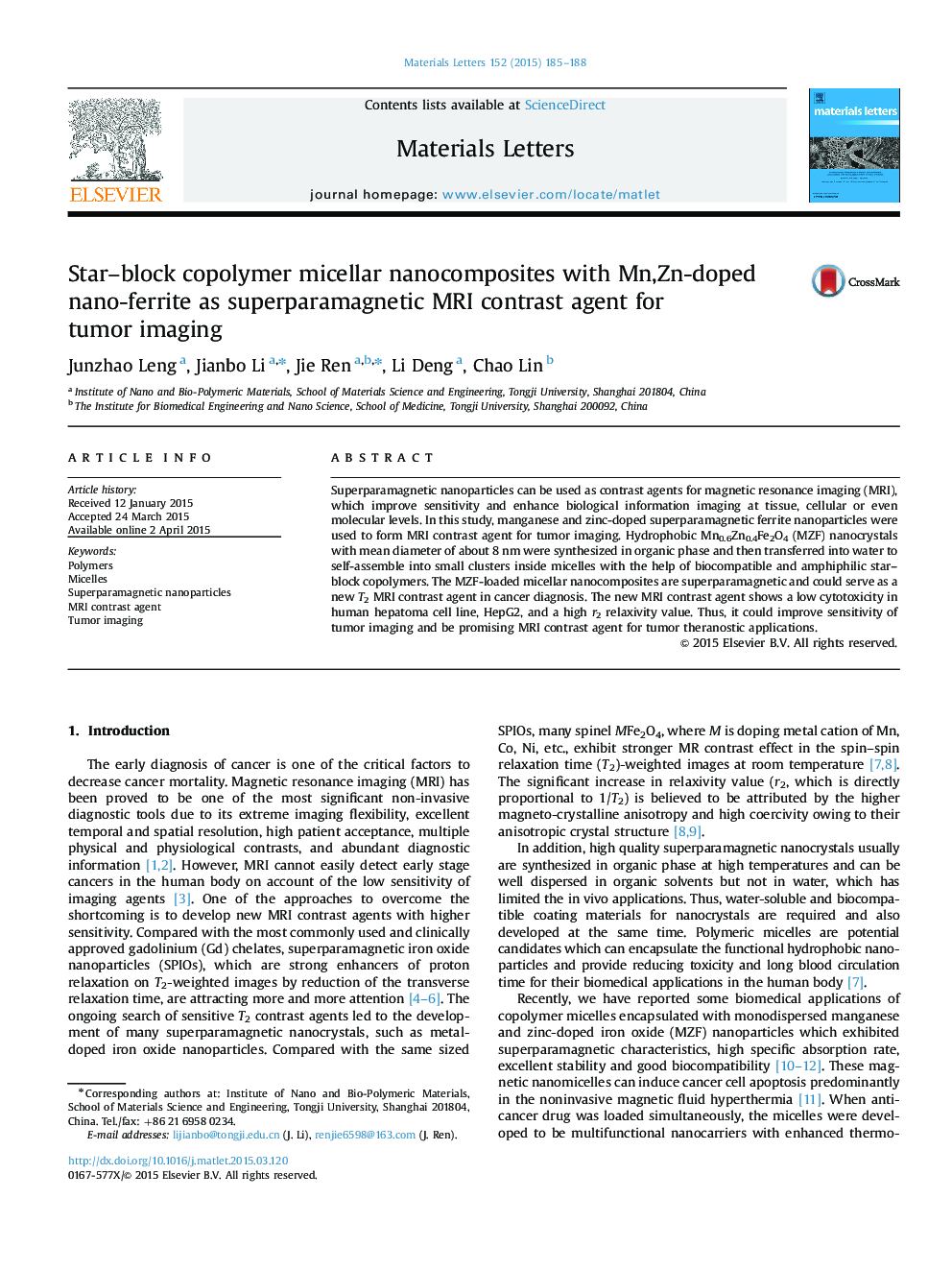| Article ID | Journal | Published Year | Pages | File Type |
|---|---|---|---|---|
| 8018457 | Materials Letters | 2015 | 4 Pages |
Abstract
Superparamagnetic nanoparticles can be used as contrast agents for magnetic resonance imaging (MRI), which improve sensitivity and enhance biological information imaging at tissue, cellular or even molecular levels. In this study, manganese and zinc-doped superparamagnetic ferrite nanoparticles were used to form MRI contrast agent for tumor imaging. Hydrophobic Mn0.6Zn0.4Fe2O4 (MZF) nanocrystals with mean diameter of about 8Â nm were synthesized in organic phase and then transferred into water to self-assemble into small clusters inside micelles with the help of biocompatible and amphiphilic star-block copolymers. The MZF-loaded micellar nanocomposites are superparamagnetic and could serve as a new T2 MRI contrast agent in cancer diagnosis. The new MRI contrast agent shows a low cytotoxicity in human hepatoma cell line, HepG2, and a high r2 relaxivity value. Thus, it could improve sensitivity of tumor imaging and be promising MRI contrast agent for tumor theranostic applications.
Related Topics
Physical Sciences and Engineering
Materials Science
Nanotechnology
Authors
Junzhao Leng, Jianbo Li, Jie Ren, Li Deng, Chao Lin,
